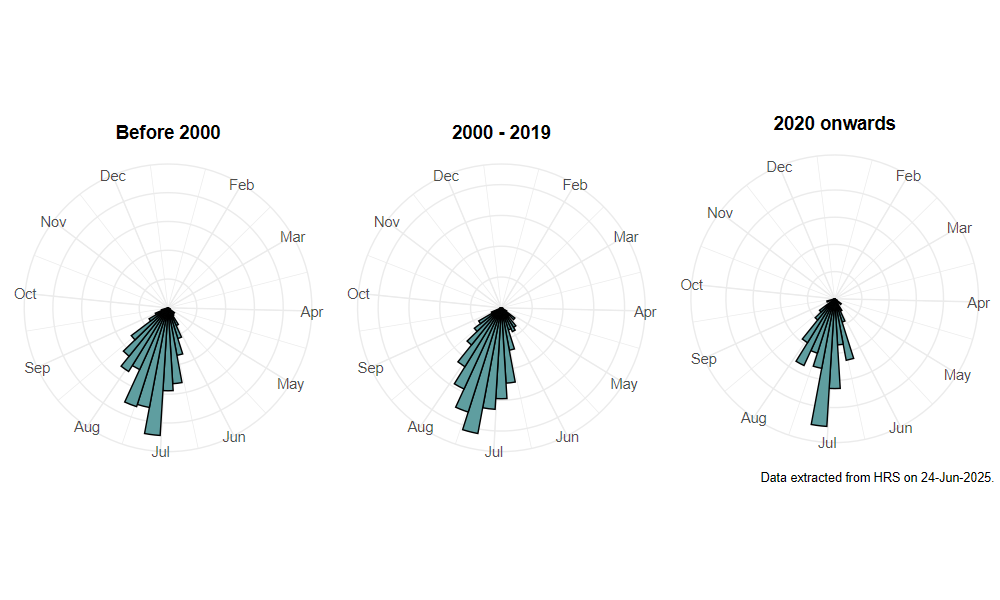Chrysogaster cemiteriorum (Linnaeus, 1758)
Identification
Identification difficulty = 3. ![]()
![]() according to Ball & Morris, 20241
according to Ball & Morris, 20241
Synonymy
Chrysogaster chalybeata Meigen 1822 in Stubbs & Falk (1983)2.
Biology
The larvae of this genus are aquatic, but the larva of this species remains unknown. Adults are usually found in wet meadows, fens and valley-bogs where they visit flowers, especially white umbels, but they can also be frequent in damp woodlands were they should be sought amongst the much more abundant C. solstitialis.
Flight period
The following plots show the number of unique records per week excluding those reported to be of immature stages.

Distribution
Widely distributed but rarely common. Primarily occurs south of the southern uplands of Scotland. There are also a few records in north-east Scotland. The patchiness of this species' distribution, such as apparent absences from parts of eastern England and from much of Cumbria cannot be readily explained.

Trends
The following plots show the Frescalo TFactor vs year and a map of the rescaled frequency (all records) for the species.